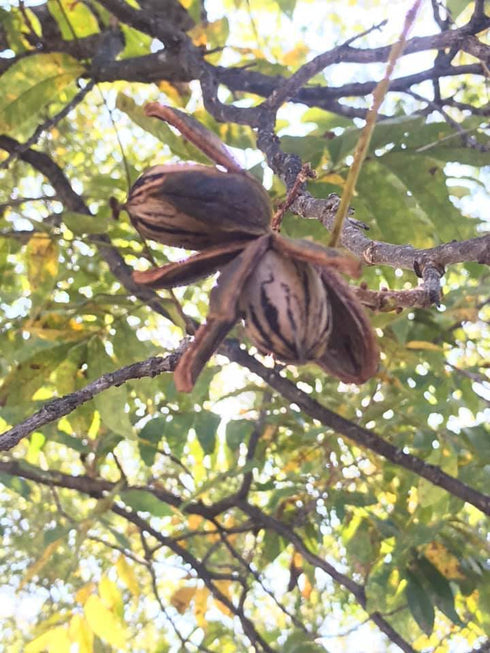
W. W. GASTON
Vice President---Marketing
Cotton Producers Association
Atlanta, Georgia
I APPRECIATE very much the opportunity of being invited to participate in your meeting and consider it a distinct privilege to talk to you about C.P.A.-Gold Kist, what we are doing and what we expect to do in cooperative marketing.
Though our main office is located in Atlanta, Georgia, we feel right at home here, for our operations extend to all parts of Texas. We have a peanut plant located at Comanche, Texas, which is one of the largest peanut-shelling plants in the Southwest. We also have peanut-buying points at Aubrey and Pleasanton, Texas, with other commissioned: agents throughout the peanut-producing areas of Texas. We have been marketing pecans throughout Texas for the past 15 years and have a number of pecan-receiving agents located throughout the pecan-producing areas in Texas.
Briefly, I will mention that Gold Kist Pecans is a division of Cotton Producers Association, which is a multidivisional cooperative, marketing peanuts, cotton, grain, pecans, poultry and livestock over a wide area from North Carolina across to Arizona. In addition to marketing these commodities, we distribute farm production supplies to farmer members such as feed, seed, fertilizer, pesticides and general farm supplies. We carry on an extensive research program in all phases of marketing and in producing better farm production supplies to prove our members with the best marketing services and the most economical farm production supplies. This past year, total business volume exceeded $200,000,000.
Within the past year, we have established an administrative office in Brussels, Belgium, to supervise the activities of our agents and brokers throughout Europe. We are presently contemplating establishing the same type office in the Orient to supervise marketing activities in that part of the world. This gives us daily contact with the markets around the world and keeps us advised as to changes in prices and marketing conditions. We think this gives us a pretty good insight into what is going on around the world at any precise time in all commodities. By having offices located in strategic centers around the world, we are able to present your products to buyers throughout the world that you as individuals would have little or no access to.
In addition to offering your products around the world, we feel that we must constantly find new markets and develop new outlets for your products. As an example, this past year, our manager in Brussels participated in a number of food fairs and trade shows to encourage the sale and use of pecans, peanuts and other C.P.A.-Gold Kist products. Pecans and other products were displayed at Milan, Italy, in February 1966; London, in February 1966; Manchester, England, in May 1966; Utrecht, The Netherlands, in May 1966; Brussels, Belgium, in November 1965 and Cologne, Germany, in October 1965.
This brings me to the point that I want to stress today. We have a responsibility to our membership to go one step further than just offering you a local market for your pecans and other products. We feel that we must go to all areas of the world to introduce them to the use of your pecans, peanuts and poultry. We have felt for a number of years that unless markets were constantly expanded for farm commodities that we would see constantly reduced prices as
48 PROCEEDINGS TEXAS PECAN GROWERS ASSOCIATION
volume increased in a certain commodity. (Cotton is a good example). We know that 200,000,000-pound crops of pecans can easily be consumed in this county, but we also know that 500,000,000 pounds cannot be consumed in this country at the same price level that 200, 000, 000 pounds can; unless the increased production is moved to other markets or additional uses are found in this market for pecans. The price will be the variable factor and, consequently, grower income will suffer. This is the basic reason for our looking for new markets around the world and trying to expand the existing markets in this country. I often hear the comment that we can sell all the pecans we produce . . . we can, but will prices be profitable?
While we realize that we must look for new markets tor your pecans, we realize that we don't have the cure for all the pecan-marketing problems. While we take the initiative in new market development in finding new markets, you must take the initiative in providing uniform quality, more consistent crop sizes and more efficient and economical methods of harvesting and handling pecans up to the time they reach our facilities. By this, I mean you will have to develop methods of reducing harvesting costs so that we can be competitive with other nuts within this country as well as the production of nuts in other producing areas around the world. If other producing areas are able to harvest nuts for 2 or 3 cents per pound, it certainly suggests that we will not be competitive long if our harvesting costs are 8, 10 and 12 cents per pound. I am sure most of you here today are familiar with and are already working hard on improving cultural practices and improving and making more efficient harvesting methods; but the entire industry must be appraised of these new efficiencies in producing and harvesting pecans. Not only must pecans be competitively priced with other nuts to maintain markets, but we must have consistent supplies to maintain market distribution.
Large manufacturers plan 6 to 12 months ahead on ingredients going into products they manufacture, such as candy, ice cream, cakes or confectionery items. Many factors are involved in their deciding to use pecans or not to use them. They have to set up their advertising program, packaging, price structures, employment levels, plant capacity, plant scheduling and many other things before they have their program set to use pecans. Once this program is set and they have pecans in a product, it's very disappointing to them to find that the very next year the supply of pecans is not available to maintain distribution of that certain product. Often, they find the price moving completely out of range with other competitive nuts. Once they have taken pecans out of their product, it presents tremendous problems to get them convinced to put them back in when we have another big, unusual size crop.
Now, I am not far enough away from home to pose as an expert as to how you can maintain more uniform crop sizes, but I have heard from some of the experts that cultural practices, fertilization, spraying and these sort of things do tend to maintain more uniform crop size. I do know that we can do a much better job of marketing your pecans if the crop size is more uniform. I believe the marketing structure can gear up for a 300,000,000-pound crop or it can gear up for a 500,000,000-pound crop, but where the marketing structure has tremendous problems is switching from a 500, 000, 000-pound crop to a 100,000,000-pound crop . . . this presents very unusual problems in maintaining market distribution. It is also my understanding that improved fertilization, cultural practices and spraying generally provide a better quality product.
While most commodities are now bought and sold on a strict grading basis, this is not always the case with pecans. We have contended for a number of years that pecans should be bought on a more realistic grading method. You shouldn't sell your pecans on a non-graded basis any more than you would sell your cotton on an average basis or your other products on a non-graded basis. We have contended that pecans should be sold on a meat-yield basis with proper values given to color of the kernels, soundness of kernels, moisture content and size. I am sure you wouldn't want to sell your strict middling cotton at the same price you would sell your low middling cotton, or your 1-1/8” cotton at the same price as 15/16”. Pecans can profit by lessons learned in other grading systems. We intend to continue to expand our marketing of pecans based on the principle of paying premiums for better quality nuts.
PROCEEDINGS TEXAS PECAN GROWERS ASSOCIATION 49
We feel we have the personnel and the organization to effectively help you market much larger crops of pecans. We are working in every way possible with the food manufacturers and other users of pecans in this country. We are working to expand distribution in areas not now using pecans. We are trying to make pecans the number one nut meat in the minds of all consumers.
Two weeks ago, I saw inshell pecans displayed in an open-air market in Appledorn, Holland, and candy with seedling halves on it in Brugges, Holland. I sampled butterpecan ice cream in London, England. I visited supermarkets in France and Germany where they had packages of inshell pecans prominently displayed, and to my surprise the sales personnel were familiar with the pecan products, knew what they were and where they originated. So, I feel that we are just on the threshold of tremendously increasing consumption of pecans throughout the world. With the proper marketing program operating from the producer through to the consumer, you should be in the forefront to share in this increased consumption of pecans throughout the world.
We welcome the opportunity to meet with you today and solicit your support, your ideas, and your constructive criticism so that we can help you do a better job of marketing your pecans and enlarging the pecan share of the nut market in this country and around the world.

